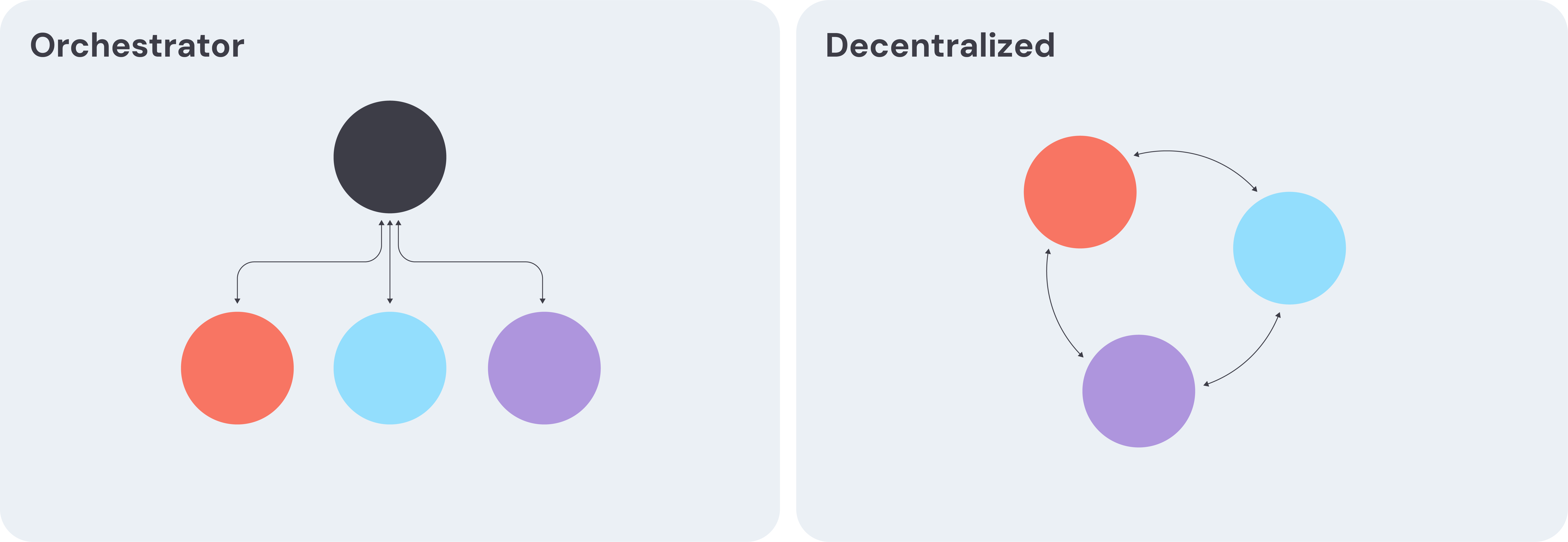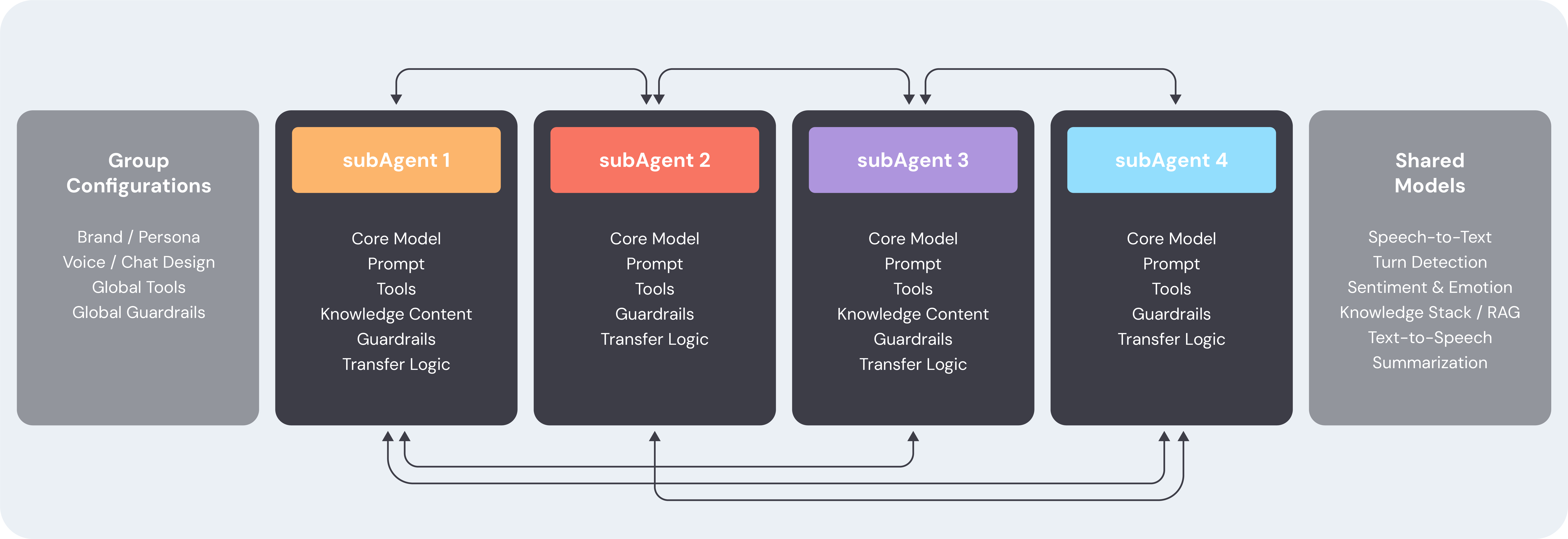Businesses have spent years trying to automate customer service conversations. But the last generation of tools ran into the same obstacles again and again: rigid scripts, an inability to handle complex issues, and awkward hand-offs that frustrated customers.
Fast forward to today, and AI agents are no longer just flowcharts that are rigidly programmed to speak or type. They can make complex decisions on the fly, leverage tools and knowledge dynamically, and blend specialized skills to solve a much wider range of problems.
These systems are far more capable, but come with their own set of challenges: inconsistent and unreliable outputs, skipping critical steps, and faltering through long, multi-faceted conversations.
One way to address these weaknesses is by using a network of specialized agents managed by a central orchestrator. This setup can simplify complexity, but it also introduces drawbacks: single points of failure, higher latency, and inefficient sequential processing.

At Cresta, we believe the next leap forward in AI agents requires a different kind of architecture: one that decentralizes intelligence, allows specialized skills to work in parallel, and reinforces key decisions with code-based determinism.
In this blog, we’ll explore how a decentralized agentic design delivers faster, more reliable, and more adaptable customer experiences.
Eliminating single points of failure for greater reliability
Many AI agent platforms use a central orchestrator to manage decision-making and task routing. While this controller can simplify logic, it can also create a single point of failure. If the orchestrator falters due to an unexpected scenario, a model update, or a spike in call volume, the entire experience may degrade or break down.
A decentralized architecture takes a different approach, distributing responsibilities across a network of specialized subagents, each with its own well-defined role: authentication, policy verification, troubleshooting workflows, payment handling, and more. This leads to more resilient automation and a consistently available customer experience, even as edge cases or new requirements emerge.
Avoiding compounding errors from a probabilistic orchestrator
Even when a central orchestrator performs as expected, it carries another risk: reliability degrades over time because it is probabilistic by design. Each decision point requires the orchestrator to infer which subagent to call. That means errors can accumulate across long conversations, especially when multiple turns and conditional paths are involved. The result is a higher likelihood of routing to the wrong subagent or skipping an important step—even without any system “failure.”
A decentralized design avoids this by removing the single probabilistic chokepoint. Subagents handle their areas of expertise directly and in parallel, reducing the chances of compounded mistakes. The outcome is a system that maintains accuracy and consistency across longer, more complex conversations.
Lower latency and real-time responsiveness in every channel
In customer conversations—especially voice—speed matters. A few hundred milliseconds can make the difference between a natural flow and an awkward lag that frustrates customers. Centralized architectures can sometimes introduce extra steps, since every decision and turn reroutes through the orchestrator.
With a decentralized design, specialized agents work in parallel and can collaborate directly, rather than requiring a central orchestrator to determine what needs to happen next. This removes unnecessary round trips, reducing latency and unnecessary incremental cost. Customers hear responses almost as quickly as if they were speaking to a highly-trained human, not waiting for a decision tree to finish processing. This real-time capability is important for digital, voice, and blended omnichannel experiences, enabling immediate, natural-feeling service that helps keep customer satisfaction high.

Deterministic state management and dynamic prompting delivers reliability you can trust
While large language models bring remarkable flexibility, they can also behave unpredictably, sometimes skipping steps or producing inconsistent responses. It’s a tendency that needs to be addressed irrespective of whether the core architecture is decentralized or relies on an orchestrator. This risk can be mitigated by pairing deterministic state management with dynamic prompt updates so that each reinforces the other in real time.
Deterministic state management keeps track of exactly where a customer is in a process, triggering the right actions at the right moment. For instance, it might confirm flight change rules before asking for a new travel date. Or, in an e-commerce setting, it might check return eligibility before offering a refund or exchange.
Dynamic prompt updates then keep the AI focused on the immediate step, only requesting information that’s relevant based on what has already been verified. Working together, these capabilities help prevent skipped steps, reduce errors, and deliver more consistent performance at scale in any agentic architecture—centralized or decentralized.
In conclusion
Decentralized agentic designs—when reinforced with deterministic state management and dynamic prompt updates—combine the adaptability of autonomous agents with the reliability of orchestrated systems. This blend avoids the pitfalls of purely agentic approaches, such as unpredictability and skipped steps, as well as the limitations of central orchestrators, like single points of failure, added latency, and sequential bottlenecks. The result is automation that can scale to more complex, multi-step conversations, adapt to evolving customer needs, and maintain the speed and consistency that customers expect.
.png)





